 Search by Keyword
|
“GIRL”
(John Lennon – Paul McCartney)
“I definitely find I work better when I’ve got a deadline to meet. It really frightens you, and you’ve got to churn them out. All the time, I’m sort of arranging things in my mind.”
 This quote from John Lennon in 1969 gives us a hint as to how under such strict deadlines Lennon and McCartney could write what would become some of the most loved and influential music of their career. At the end of 1965, with their new policy of writing all original material from now on (instead of resorting to dredging up cover songs to fill their albums), they found themselves "down to the wire" in coming up with enough songs for their latest album, “Rubber Soul.” The Christmas deadline pushed them to the limit, but John and Paul were able to churn out what became a cherished favorite to most fans of The Beatles. Such were the conditions that resulted in the song “Girl.” This quote from John Lennon in 1969 gives us a hint as to how under such strict deadlines Lennon and McCartney could write what would become some of the most loved and influential music of their career. At the end of 1965, with their new policy of writing all original material from now on (instead of resorting to dredging up cover songs to fill their albums), they found themselves "down to the wire" in coming up with enough songs for their latest album, “Rubber Soul.” The Christmas deadline pushed them to the limit, but John and Paul were able to churn out what became a cherished favorite to most fans of The Beatles. Such were the conditions that resulted in the song “Girl.”
Songwriting History
 According to the Barry Miles, co-writer of Paul’s book “Many Years From Now,” the song “Girl” was “composed during one of Paul and John’s writing sessions out at Kenwood,” John’s home in Weybridge. It appears, though, that the lyrics were written first and put to music afterwards. When asked about the song during an interview, John commented: “When Paul and I wrote lyrics, we used to laugh about it like the Tin Pan Alley people would. It was only later on that we tried to match the lyrics to the tune.” According to the Barry Miles, co-writer of Paul’s book “Many Years From Now,” the song “Girl” was “composed during one of Paul and John’s writing sessions out at Kenwood,” John’s home in Weybridge. It appears, though, that the lyrics were written first and put to music afterwards. When asked about the song during an interview, John commented: “When Paul and I wrote lyrics, we used to laugh about it like the Tin Pan Alley people would. It was only later on that we tried to match the lyrics to the tune.”
 Paul’s recalls the writing session in this way: “It was John’s original idea but it was very much co-written. I remember writing ‘the pain and pleasure’ and ‘a man must break his back,’ it was all very working-on-the-chain-gang…So I credit that as being toward John but I put quite a bit in. It wasn’t one that he came in with fully finished at all.” Paul’s recalls the writing session in this way: “It was John’s original idea but it was very much co-written. I remember writing ‘the pain and pleasure’ and ‘a man must break his back,’ it was all very working-on-the-chain-gang…So I credit that as being toward John but I put quite a bit in. It wasn’t one that he came in with fully finished at all.”
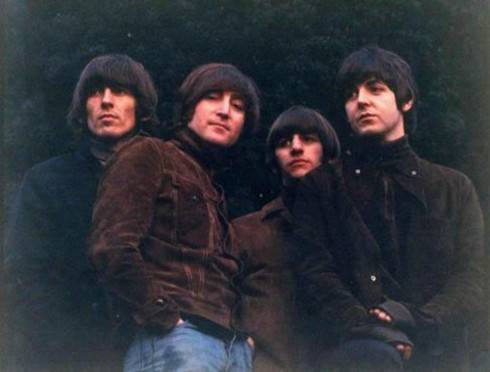 As for the true inspiration of the lyrics, John’s 1970 quote is very detailed. “’Girl’ is real. There is no such thing as the girl, she was a dream, but the words are all right. It wasn’t just a song, and it was about that girl – that turned out to be Yoko, in the end – the one that a lot of us were looking for.” As for the true inspiration of the lyrics, John’s 1970 quote is very detailed. “’Girl’ is real. There is no such thing as the girl, she was a dream, but the words are all right. It wasn’t just a song, and it was about that girl – that turned out to be Yoko, in the end – the one that a lot of us were looking for.”
John elaborated further about this ‘dream girl’ by saying: “I always had this dream of this particular woman coming into my life. I knew it wouldn’t be someone buying Beatles records. I was hoping for a woman who could give me what I get from a man intellectually. I wanted someone I could be myself with.”
 Surprisingly, the lyrics take on a religious slant as well, as Lennon continued. “It’s about, ‘Was she taught when she was young that pain would lead to pleasure, did she understand it?’ Sort of philosophy quotes I was thinking about when I wrote it. I was trying to say something or other about Christianity, which I was opposed to at the time because I was brought up in the Church. I was pretty heavy on the Church in both books, but it was never picked up, although it was obviously there. I was talking about Christianity, in that you have to be tortured to attain heaven. That was the Catholic Christian concept: be tortured and then it’ll be all right; which seems to be true, but not in their concept of it. I didn’t believe in that: that you have to be tortured to attain anything; it just so happens that you are.” Surprisingly, the lyrics take on a religious slant as well, as Lennon continued. “It’s about, ‘Was she taught when she was young that pain would lead to pleasure, did she understand it?’ Sort of philosophy quotes I was thinking about when I wrote it. I was trying to say something or other about Christianity, which I was opposed to at the time because I was brought up in the Church. I was pretty heavy on the Church in both books, but it was never picked up, although it was obviously there. I was talking about Christianity, in that you have to be tortured to attain heaven. That was the Catholic Christian concept: be tortured and then it’ll be all right; which seems to be true, but not in their concept of it. I didn’t believe in that: that you have to be tortured to attain anything; it just so happens that you are.”
 The above explanation was due in part to John’s avidly reading books about Christ at that time, the most noteworthy example being the 1960 novel “The Last Temptation Of Christ” written by author Nikos Kazantzakis. The resulting negative attitude about religion also appeared in his famous interview with Maureen Cleave for the London Evening Standard four months later, including his quote about The Beatles being “more popular than Jesus.” The above explanation was due in part to John’s avidly reading books about Christ at that time, the most noteworthy example being the 1960 novel “The Last Temptation Of Christ” written by author Nikos Kazantzakis. The resulting negative attitude about religion also appeared in his famous interview with Maureen Cleave for the London Evening Standard four months later, including his quote about The Beatles being “more popular than Jesus.”
Since it was the very last song to be recorded for the “Rubber Soul” album, many speculate that it was written in its entirety the night before. But looking at their actual schedule for the previous day, we see that they were in the recording studio from 9 pm until 4 in the morning recording “The Word” as well as continuing work on “I’m Looking Through You.” The next day's recording session began at 6 pm and lasted until 7 in the morning the following day.
 While it is possible that John and Paul had a songwriting session sometime between 4 in the morning and 6 pm the same day to write “Girl” from scratch, not to mention get some sleep, it seems improbable because of John’s testimony of the lyrics being written before it was put to music. However, what can be said is that it was no doubt written within a recent time frame, which dates the writing to November of 1965. While it is possible that John and Paul had a songwriting session sometime between 4 in the morning and 6 pm the same day to write “Girl” from scratch, not to mention get some sleep, it seems improbable because of John’s testimony of the lyrics being written before it was put to music. However, what can be said is that it was no doubt written within a recent time frame, which dates the writing to November of 1965.
Recording History
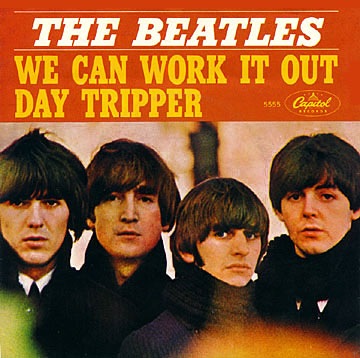 After one full month of recording that started on October 12th, 1965, which included fourteen days of sessions at EMI Studios, their sixth British album was nearly complete. Within this time they had also recorded their next single “We Can Work It Out” and “Day Tripper,” so they had accomplished quite a lot. But not quite enough. They still needed three more songs to fill out the fourteen slots on the album. After one full month of recording that started on October 12th, 1965, which included fourteen days of sessions at EMI Studios, their sixth British album was nearly complete. Within this time they had also recorded their next single “We Can Work It Out” and “Day Tripper,” so they had accomplished quite a lot. But not quite enough. They still needed three more songs to fill out the fourteen slots on the album.
 This being the case, they arrived at EMI Studio Two on November 11th, 1965 at 6 pm for a marathon recording session to complete the album, no matter how long it would take. They came armed on this day with two new songs to be recorded in their entirety, namely “You Won’t See Me,” which they tackled first, and “Girl.” Knowing this would be the last possible session to complete the album, they decided to resurrect “Wait,” which was a nearly complete song they had recorded for the previous album but had left unissued. This being the case, they arrived at EMI Studio Two on November 11th, 1965 at 6 pm for a marathon recording session to complete the album, no matter how long it would take. They came armed on this day with two new songs to be recorded in their entirety, namely “You Won’t See Me,” which they tackled first, and “Girl.” Knowing this would be the last possible session to complete the album, they decided to resurrect “Wait,” which was a nearly complete song they had recorded for the previous album but had left unissued.
 The first of two takes of the rhythm track for “Girl” was started at approximately 11 pm. It appears that only three Beatles played on the rhythm track: John on acoustic guitar played with a capo high up on the neck, Paul on bass guitar on his own designated track, and Ringo on drums played with brushes. No vocals were performed during the rhythm track as these were all overdubbed later. "Take two" of the rhythm track was found to be best and extensive overdubs were then added. The first of two takes of the rhythm track for “Girl” was started at approximately 11 pm. It appears that only three Beatles played on the rhythm track: John on acoustic guitar played with a capo high up on the neck, Paul on bass guitar on his own designated track, and Ringo on drums played with brushes. No vocals were performed during the rhythm track as these were all overdubbed later. "Take two" of the rhythm track was found to be best and extensive overdubs were then added.
 John Lennon’s lead vocals were overdubbed first and feature an interesting element not heard before on a Beatles recording. As Ringo affectionately recalls: “’Girl’ was great – weird breathy sound on it.” Paul explains, “My main memory is that John wanted to hear the breathing, wanted it to be very intimate, so George Martin put a special compressor on the voice, then John dubbed it.” On another occasion, Paul remembered the occasion this way: “I remember John saying to the engineer (Norman Smith) when we did ‘Girl,’ that when he draws his breath in, he wants to hear it. The engineer then went off and figured out how to do it. We really felt like young professionals.” John Lennon’s lead vocals were overdubbed first and feature an interesting element not heard before on a Beatles recording. As Ringo affectionately recalls: “’Girl’ was great – weird breathy sound on it.” Paul explains, “My main memory is that John wanted to hear the breathing, wanted it to be very intimate, so George Martin put a special compressor on the voice, then John dubbed it.” On another occasion, Paul remembered the occasion this way: “I remember John saying to the engineer (Norman Smith) when we did ‘Girl,’ that when he draws his breath in, he wants to hear it. The engineer then went off and figured out how to do it. We really felt like young professionals.”
 Several more overdubs were then added, including three separate guitar parts by George Harrison. One of them, described by Mark Lewisohn in his book “The Beatles Recording Sessions” as a “fuzz guitar part,” was omitted from the mix entirely. This part no doubt was performed using the same Fuzztone box Paul played his bass guitar through three days earlier on the song “Think For Yourself.” The other two guitar parts played by George Harrison were on an acoustic 12-string as heard in the third and fourth verses of the song. Several more overdubs were then added, including three separate guitar parts by George Harrison. One of them, described by Mark Lewisohn in his book “The Beatles Recording Sessions” as a “fuzz guitar part,” was omitted from the mix entirely. This part no doubt was performed using the same Fuzztone box Paul played his bass guitar through three days earlier on the song “Think For Yourself.” The other two guitar parts played by George Harrison were on an acoustic 12-string as heard in the third and fourth verses of the song.
 Another interesting overdub for the song was played by Ringo. This consisted of him hitting a cymbal and then grabbing the cymbal shortly afterward to stop the ringing. This was done sixteen times in the fourth verse while both of George’s acoustic guitar overdubs are being heard. Another interesting overdub for the song was played by Ringo. This consisted of him hitting a cymbal and then grabbing the cymbal shortly afterward to stop the ringing. This was done sixteen times in the fourth verse while both of George’s acoustic guitar overdubs are being heard.
John also double-tracked his lead vocals as an overdub, but only during the choruses and the bridge. He also took the time to double-track his breathing in the choruses to make sure they were pronounced enough on the final product.
 Paul and George also overdubbed background vocals during the choruses and bridge, which added another unique element to the song. “It was always amusing to see if we could get a naughty word on the record,” Paul remembers, mentioning “Fish and finger pie” from “Penny Lane” and “prick teaser” from “Day Tripper.” Paul and George also overdubbed background vocals during the choruses and bridge, which added another unique element to the song. “It was always amusing to see if we could get a naughty word on the record,” Paul remembers, mentioning “Fish and finger pie” from “Penny Lane” and “prick teaser” from “Day Tripper.”
 Paul continues, “The Beach Boys had a song out where they’d done ‘la la la la’ and we loved the innocence of that and wanted to copy it, but not use the same phrase. So we were looking around for another phrase, so it was ‘dit dit dit dit,’ which we decided to change in our waggishness to ‘tit tit tit tit,’ which is virtually indistinguishable from ‘dit dit dit dit.’ And it gave us a laugh. It was to get some light relief in the middle of this real big career that we were forging. If we could put in something that was a little bit subversive then we would. George Martin might say, ‘Was that “dit dit” or “tit tit” you were saying?’ ‘Oh, “dit dit,” George, but it does sound a bit like that, doesn’t it?’ Then we’d get in the car and break down laughing.” Paul continues, “The Beach Boys had a song out where they’d done ‘la la la la’ and we loved the innocence of that and wanted to copy it, but not use the same phrase. So we were looking around for another phrase, so it was ‘dit dit dit dit,’ which we decided to change in our waggishness to ‘tit tit tit tit,’ which is virtually indistinguishable from ‘dit dit dit dit.’ And it gave us a laugh. It was to get some light relief in the middle of this real big career that we were forging. If we could put in something that was a little bit subversive then we would. George Martin might say, ‘Was that “dit dit” or “tit tit” you were saying?’ ‘Oh, “dit dit,” George, but it does sound a bit like that, doesn’t it?’ Then we’d get in the car and break down laughing.”
 By approximately 4 am the following morning, the song was finally complete. They still stayed in the studio another three hours to complete “Wait” and put the finishing touches on “I’m Looking Through You” before going home with the knowledge that the album was finally finished as far as they were concerned. By approximately 4 am the following morning, the song was finally complete. They still stayed in the studio another three hours to complete “Wait” and put the finishing touches on “I’m Looking Through You” before going home with the knowledge that the album was finally finished as far as they were concerned.
 On November 15th, 1965, George Martin and engineers Norman Smith and Richard Lush entered the control room of EMI Studio Two to create the remaining mixes for the resulting “Rubber Soul” album. Both the mono and stereo mixes of “Girl” were done on this day. The stereo mix basically has the instrumental rhythm track on the left channel except for the bass which is centered in the mix, this being made possible by them recording the bass on its own track during the recording of the rhythm track. All vocals are panned exclusively to the right channel as is George’s first guitar overdub. In order to provide a wider audio landscape, George’s second guitar overdub, as heard in the final instrumental verse, is panned exclusively to the left channel as is Ringo’s cymbal overdub. On November 15th, 1965, George Martin and engineers Norman Smith and Richard Lush entered the control room of EMI Studio Two to create the remaining mixes for the resulting “Rubber Soul” album. Both the mono and stereo mixes of “Girl” were done on this day. The stereo mix basically has the instrumental rhythm track on the left channel except for the bass which is centered in the mix, this being made possible by them recording the bass on its own track during the recording of the rhythm track. All vocals are panned exclusively to the right channel as is George’s first guitar overdub. In order to provide a wider audio landscape, George’s second guitar overdub, as heard in the final instrumental verse, is panned exclusively to the left channel as is Ringo’s cymbal overdub.
 George Martin returned to the master tape in 1986 to prepare a new stereo mix for the premier of the “Rubber Soul” album on compact disc. The most noticeable difference here, other than the bass guitar being exclusively panned to the left channel this time around, is that the lead vocals do have some bleed-through onto the left channel as well although they are not centered as expected. George Martin returned to the master tape in 1986 to prepare a new stereo mix for the premier of the “Rubber Soul” album on compact disc. The most noticeable difference here, other than the bass guitar being exclusively panned to the left channel this time around, is that the lead vocals do have some bleed-through onto the left channel as well although they are not centered as expected.
 Giles Martin was given the task in 2023 of creating a "demix remix" of "Girl" for inclusion on the 50th Anniversary edition of the compilation album "The Beatles / 1962 - 1966" (aka "The Red Album"). With Peter Jackson's AI technology at his disposal, Giles Martin was able to utilize this "new machine-learning techology" so that "individual elements that were put to tape...and were therefore impossible to separate" could be "untangled, allowing Giles (Martin) to put the original recordings back together with even greater clarity and impact," as stated by John Harris in the liner notes of the above mentioned album. This is arguably the most vibrant and satisfying stereo version of the song to date, Ringo's rim shots being heard primarily in the left channel with a nice separation of acoustic guitars between both channels. Giles Martin was given the task in 2023 of creating a "demix remix" of "Girl" for inclusion on the 50th Anniversary edition of the compilation album "The Beatles / 1962 - 1966" (aka "The Red Album"). With Peter Jackson's AI technology at his disposal, Giles Martin was able to utilize this "new machine-learning techology" so that "individual elements that were put to tape...and were therefore impossible to separate" could be "untangled, allowing Giles (Martin) to put the original recordings back together with even greater clarity and impact," as stated by John Harris in the liner notes of the above mentioned album. This is arguably the most vibrant and satisfying stereo version of the song to date, Ringo's rim shots being heard primarily in the left channel with a nice separation of acoustic guitars between both channels.
Song Structure and Style
 The Beatles were becoming more comfortable including a chorus in their compositions by 1965, “Girl” being another prime example. The structure consists of ‘verse/ chorus/ verse/ chorus/ bridge/ chorus/ verse/ chorus/ instrumental verse/ chorus’ (or ababcbabab). The Beatles were becoming more comfortable including a chorus in their compositions by 1965, “Girl” being another prime example. The structure consists of ‘verse/ chorus/ verse/ chorus/ bridge/ chorus/ verse/ chorus/ instrumental verse/ chorus’ (or ababcbabab).
This being primarily considered as a Lennon song, he adds a further international touch to the album by incorporating a somewhat German-sounding feel to compliment the French equivalent in Paul’s “Michelle.” His highly-capoed acoustic guitar gives the feel of a mandolin which, according to Ian MacDonald’s book “Revolution In The Head,” “the group must have heard on the radio during their Hamburg seasons of 1960-2.”
 They decided that an official introduction to the song was not necessary, John beginning his vocals a cappella before the downbeat of the first measure (“Is there…”) of the first eight-measure verse. This trick had become a habit of theirs, as evidenced as early as “It Won’t Be Long” and “All My Loving” among others. However, when the downbeat arrives, John’s single-tracked vocals are joined by the rhythm track which consists of John’s acoustic guitar, Paul’s bass and Ringo’s brushed snare drum. John’s vocals are deliberately labored and stray dramatically from the beat for added effect. They decided that an official introduction to the song was not necessary, John beginning his vocals a cappella before the downbeat of the first measure (“Is there…”) of the first eight-measure verse. This trick had become a habit of theirs, as evidenced as early as “It Won’t Be Long” and “All My Loving” among others. However, when the downbeat arrives, John’s single-tracked vocals are joined by the rhythm track which consists of John’s acoustic guitar, Paul’s bass and Ringo’s brushed snare drum. John’s vocals are deliberately labored and stray dramatically from the beat for added effect.
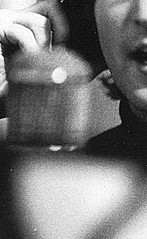 As the first verse ends, John’s vocals become double-tracked on the word “aah…” and remain that way for the entire four-measure chorus. With Paul and George chiming in on harmonies, the lyrics of the chorus consists only of a three-time repeated lyric “girl,” interjected with a double-tracked inward breath from John in the second measure. As the first verse ends, John’s vocals become double-tracked on the word “aah…” and remain that way for the entire four-measure chorus. With Paul and George chiming in on harmonies, the lyrics of the chorus consists only of a three-time repeated lyric “girl,” interjected with a double-tracked inward breath from John in the second measure.
 After another musically identical repeat of a verse and chorus, a unique eight-measure bridge appears which combines the swing rhythm heard so far with a contrasting hammered eighth-note beat sung by the background vocalists with the naughty lyrics “tit tit tit.” John continues to sing double-tracked in the bridge while maintaining the swing rhythm vocally, suggesting that the background vocals were added afterward (otherwise it would have been very confusing for John to sing). However, they may very well have planned to add this eighth note element from the beginning since John’s acoustic guitar strums in this section are only heard on the quarter notes. After another musically identical repeat of a verse and chorus, a unique eight-measure bridge appears which combines the swing rhythm heard so far with a contrasting hammered eighth-note beat sung by the background vocalists with the naughty lyrics “tit tit tit.” John continues to sing double-tracked in the bridge while maintaining the swing rhythm vocally, suggesting that the background vocals were added afterward (otherwise it would have been very confusing for John to sing). However, they may very well have planned to add this eighth note element from the beginning since John’s acoustic guitar strums in this section are only heard on the quarter notes.
 Ringo strays away from the snare drum with his right hand in this section by riding on a cymbal, although this mistakenly doesn’t come in until the second beat of the first measure. Another quite interesting feature here is John’s single note melody line, a distinguishing Lennon trademark heard throughout The Beatles cannon, such as on the verses of “Help!” from earlier that year. Ringo strays away from the snare drum with his right hand in this section by riding on a cymbal, although this mistakenly doesn’t come in until the second beat of the first measure. Another quite interesting feature here is John’s single note melody line, a distinguishing Lennon trademark heard throughout The Beatles cannon, such as on the verses of “Help!” from earlier that year.
 After a third repeat of the chorus, a third verse appears which has the added element of this first appearance of George Harrison musically in the song. A simple quarter-note counter-melody line is played by George on a Framus Hootenanny 12-string acoustic guitar as an overdub. Afterward, the chorus is heard for the fourth time before an instrumental verse begins. This verse not only repeats George’s counter-melody line but adds a harmony to it played in eighth notes, also played by George as an overdub on a 12-string acoustic guitar. We also hear Ringo crashing a cymbal and then stopping it from ringing on the second and fourth beats of each measure. After a third repeat of the chorus, a third verse appears which has the added element of this first appearance of George Harrison musically in the song. A simple quarter-note counter-melody line is played by George on a Framus Hootenanny 12-string acoustic guitar as an overdub. Afterward, the chorus is heard for the fourth time before an instrumental verse begins. This verse not only repeats George’s counter-melody line but adds a harmony to it played in eighth notes, also played by George as an overdub on a 12-string acoustic guitar. We also hear Ringo crashing a cymbal and then stopping it from ringing on the second and fourth beats of each measure.
Since there wasn’t a proper resolve written for the song, the chorus is repeated identically for the fifth time while the song quickly fades away before the fourth measure ends, no doubt because that’s exactly where the performance ended.
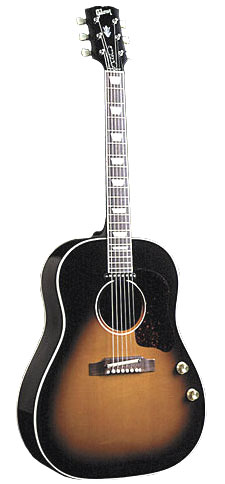 John’s capoed Gibson acoustic guitar playing and emotive vocal work make him the star of the show, once again playing the role of singer/songwriter to a tee. With his sultry delivery and lusty breathing, his vocals on “Girl” display his most revealing performance to date. John’s capoed Gibson acoustic guitar playing and emotive vocal work make him the star of the show, once again playing the role of singer/songwriter to a tee. With his sultry delivery and lusty breathing, his vocals on “Girl” display his most revealing performance to date.
Paul’s oom-pah bass work adds to the ethnic feel of the song while his and George’s bending backing vocals bring a classy sway to each chorus. George’s lack of presence musically is redeemed by his overdubbed counter-melody lines which were performed flawlessly. Ringo’s job may have been simple, but credit must be given for his appropriate delivery and patience during a five-and-a-half hour recording session on this track with not much for him to do.
 While John fondly remembers this song as being about his "dream girl," this memory must only be in reference to the first verse which tells his “story all about the girl who came to stay.” He is so enamored with her that he doesn’t “regret a single day” spent with her. The second verse, however, relates how he’s grown so dependent on her that he can’t leave her even though he feels he should. “All the times” he attempts to leave she “starts to cry,” showing remorse for treating him badly. Arguably the most telling line of the song is John’s gullibly believing her when she “promises the earth” to him in repentance, even though she’s done this repeatedly. While John fondly remembers this song as being about his "dream girl," this memory must only be in reference to the first verse which tells his “story all about the girl who came to stay.” He is so enamored with her that he doesn’t “regret a single day” spent with her. The second verse, however, relates how he’s grown so dependent on her that he can’t leave her even though he feels he should. “All the times” he attempts to leave she “starts to cry,” showing remorse for treating him badly. Arguably the most telling line of the song is John’s gullibly believing her when she “promises the earth” to him in repentance, even though she’s done this repeatedly.
 We then see that his girl humiliates him in public, making him “feel the fool.” She’s also conceited, accepting the compliment of her “looking good” by acting “as if it’s understood.” Then the final verse changes gears completely by introducing the supposed Catholic concept of "pain leading to pleasure." All in all, I sure hope that Yoko, who John said turned out to be his "dream girl" in the end, didn’t treat him as badly as depicted in this song. We then see that his girl humiliates him in public, making him “feel the fool.” She’s also conceited, accepting the compliment of her “looking good” by acting “as if it’s understood.” Then the final verse changes gears completely by introducing the supposed Catholic concept of "pain leading to pleasure." All in all, I sure hope that Yoko, who John said turned out to be his "dream girl" in the end, didn’t treat him as badly as depicted in this song.
American Releases
 “Girl” was premiered in the US on December 6th, 1965 as an album track on “Rubber Soul.” The starkly acoustic arrangement fit in extremely well with the “wood and smoke” feel of the American version of the album, as Ron Schaumburg described it in his book “Growing Up With The Beatles.” Capitol's version of "Rubber Soul" was released on an individual compact disc on January 21st, 2014, both the mono and stereo versions of the album contained on a single CD. “Girl” was premiered in the US on December 6th, 1965 as an album track on “Rubber Soul.” The starkly acoustic arrangement fit in extremely well with the “wood and smoke” feel of the American version of the album, as Ron Schaumburg described it in his book “Growing Up With The Beatles.” Capitol's version of "Rubber Soul" was released on an individual compact disc on January 21st, 2014, both the mono and stereo versions of the album contained on a single CD.
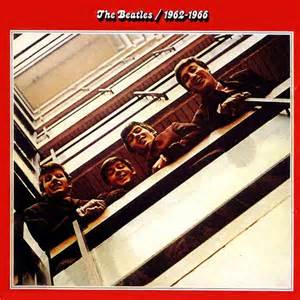 April 2nd, 1973 was its next American release, as a track on the first official compilation album, appropriately named “The Beatles/1962-1966” (aka “The Red Album”). While it hadn't been released as a single up to that point, it was a strong enough album track to earn its right to be included. April 2nd, 1973 was its next American release, as a track on the first official compilation album, appropriately named “The Beatles/1962-1966” (aka “The Red Album”). While it hadn't been released as a single up to that point, it was a strong enough album track to earn its right to be included.
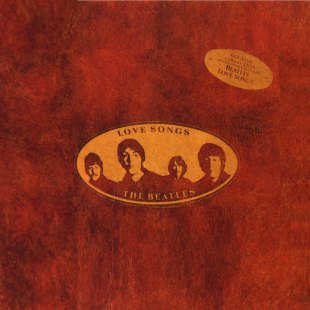 Even though it was included in the above album, it still made the grade to be part of the October 21st, 1977 released compilation album “Love Songs.” Although a new mix was not made at this point, there was a striking difference in the stereo mix used on this collection. John’s lead vocals were centered instead of mixed entirely to the right as originally heard, which must have been accomplished by panning the entire right channel to the center of the mix. Even though it was included in the above album, it still made the grade to be part of the October 21st, 1977 released compilation album “Love Songs.” Although a new mix was not made at this point, there was a striking difference in the stereo mix used on this collection. John’s lead vocals were centered instead of mixed entirely to the right as originally heard, which must have been accomplished by panning the entire right channel to the center of the mix.
 The record label thought so much of the song that they intended to release a single from this collection that year, pairing “Girl” as the a-side with “You’re Going To Lose That Girl” as the b-side. Although the single was never officially released to the public, picture sleeves were prepared and promotional copies were printed at that time. This promo single featured “Girl” on both sides, one in mono and the other in stereo. This single is quite the find these days. The record label thought so much of the song that they intended to release a single from this collection that year, pairing “Girl” as the a-side with “You’re Going To Lose That Girl” as the b-side. Although the single was never officially released to the public, picture sleeves were prepared and promotional copies were printed at that time. This promo single featured “Girl” on both sides, one in mono and the other in stereo. This single is quite the find these days.
 The first time the original UK "Rubber Soul” album was released in the US was the "Original Master Recording" vinyl edition released through Mobile Fidelity Sound Lab in June of 1984. This album included "Girl" and was prepared utilizing half-speed mastering technology from the original master tape on loan from EMI. This version of the album was only available for a short time and is quite collectible today. The first time the original UK "Rubber Soul” album was released in the US was the "Original Master Recording" vinyl edition released through Mobile Fidelity Sound Lab in June of 1984. This album included "Girl" and was prepared utilizing half-speed mastering technology from the original master tape on loan from EMI. This version of the album was only available for a short time and is quite collectible today.
 On April 30th, 1987, the full British “Rubber Soul” album was officially released in the US in the compact disc format, the vinyl edition coming out on July 21st, 1987. George Martin’s 1986 stereo mix of “Girl” was included, which has a slightly different panning of the lead vocals and bass guitar (see “Recording History” for more details). This new mix was also contained on the remastered version of the CD that was released on September 9th, 2009, the remastered vinyl edition coming out on November 13th, 2012. On April 30th, 1987, the full British “Rubber Soul” album was officially released in the US in the compact disc format, the vinyl edition coming out on July 21st, 1987. George Martin’s 1986 stereo mix of “Girl” was included, which has a slightly different panning of the lead vocals and bass guitar (see “Recording History” for more details). This new mix was also contained on the remastered version of the CD that was released on September 9th, 2009, the remastered vinyl edition coming out on November 13th, 2012.
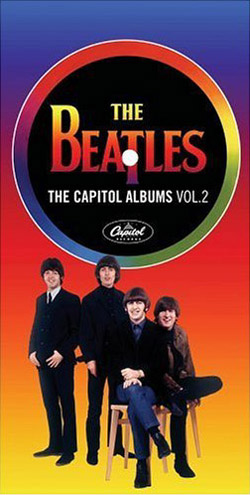 The second in a series of Capitol box sets entitled “The Capitol Albums, Vol. 2” was released on April 11th, 2006 and included the entire “Rubber Soul” album as available in America in the '60s. Both the stereo and mono versions of the album are included, so the original 1965 stereo mix of "Girl" was made available on CD for the first time on this release. On initial pressings of this set, Capitol mistakenly presented a "mono type-B" fold-down mono mix of the entire "Rubber Soul" album," which was a method that combined both the left and right channels of the stereo mix to create a mono mix. Therefore, the mono mix of "Girl" in this set was initially prepared in this way, the error being corrected on subsequent pressings. The second in a series of Capitol box sets entitled “The Capitol Albums, Vol. 2” was released on April 11th, 2006 and included the entire “Rubber Soul” album as available in America in the '60s. Both the stereo and mono versions of the album are included, so the original 1965 stereo mix of "Girl" was made available on CD for the first time on this release. On initial pressings of this set, Capitol mistakenly presented a "mono type-B" fold-down mono mix of the entire "Rubber Soul" album," which was a method that combined both the left and right channels of the stereo mix to create a mono mix. Therefore, the mono mix of "Girl" in this set was initially prepared in this way, the error being corrected on subsequent pressings.
Another place to find the original stereo mix, as well as the original mono mix, is on the box set “The Beatles In Mono,” which was released on compact disc on September 9th, 2009 and on vinyl on September 9th, 2014.
 A newly created version of “Girl” was put together by George Martin and his son Giles specifically for the Cirque du Soleil production “Love.” Although this song was not included on the 2006 released album, it did get released as a digital download in the iTunes Store on February 8th, 2011. It combines elements of The Beatles 1964 classic “And I Love Her” as well as drum rolls from "Being For The Benefit Of Mr. Kite." A newly created version of “Girl” was put together by George Martin and his son Giles specifically for the Cirque du Soleil production “Love.” Although this song was not included on the 2006 released album, it did get released as a digital download in the iTunes Store on February 8th, 2011. It combines elements of The Beatles 1964 classic “And I Love Her” as well as drum rolls from "Being For The Benefit Of Mr. Kite."
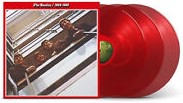 A 50th Anniversay edition of the compilation album "The Beatles / 1962 - 1966" ("The Red Album") was released on November 10th, 2023, the newly mixed stereo version of "Girl," as detailed above, being included. This expanded release included 12 additional songs for a total of 38 tracks, and was made available as a double CD and as a triple vinyl release on both black and red vinyl. A 50th Anniversay edition of the compilation album "The Beatles / 1962 - 1966" ("The Red Album") was released on November 10th, 2023, the newly mixed stereo version of "Girl," as detailed above, being included. This expanded release included 12 additional songs for a total of 38 tracks, and was made available as a double CD and as a triple vinyl release on both black and red vinyl.
Live Performances
Although neither of its composers ever expressed their opinions of this song as “album filler,” they did consider it as only an album track, albeit one they were proud of. Concequently, they never thought to include “Girl” in any concert performances in late 1965 or for the remainder of their touring career in 1966.
Conclusion
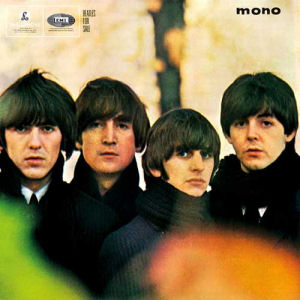 Lennon and McCartney had surely come a long way by late 1965. When under duress during the later months of 1964 to compose material for their year-end album “Beatles For Sale,” they mostly succumbed to cranking out songs in the pop formula they were accustomed to. While these songs, examples being “What You’re Doing” and “Eight Days A Week,” earn their place in The Beatles catalog as satisfying examples of pure Beatlemania, the composers themselves view them with little regard. But when faced with the same time-crunch at the end of 1965, and even less time to work with, they surprised everybody including themselves. “John and I were writing quite well by 1965,” Paul relates. “For a while we didn’t really have enough home-made material, but we did start to around the time of ‘Rubber Soul.’” Lennon and McCartney had surely come a long way by late 1965. When under duress during the later months of 1964 to compose material for their year-end album “Beatles For Sale,” they mostly succumbed to cranking out songs in the pop formula they were accustomed to. While these songs, examples being “What You’re Doing” and “Eight Days A Week,” earn their place in The Beatles catalog as satisfying examples of pure Beatlemania, the composers themselves view them with little regard. But when faced with the same time-crunch at the end of 1965, and even less time to work with, they surprised everybody including themselves. “John and I were writing quite well by 1965,” Paul relates. “For a while we didn’t really have enough home-made material, but we did start to around the time of ‘Rubber Soul.’”
 Within the last week or so of these 1965 recording sessions, “Girl” emerged from their creative minds. Instead of "album filler," what they delivered here was a highly respected, lyrically sophisticated, and structurally intricate work of art. As Lennon himself admitted: "I like this one. It was one of my best." Within the last week or so of these 1965 recording sessions, “Girl” emerged from their creative minds. Instead of "album filler," what they delivered here was a highly respected, lyrically sophisticated, and structurally intricate work of art. As Lennon himself admitted: "I like this one. It was one of my best."
Song Summary
“Girl”
Written by: John Lennon / Paul McCartney
-
Song Written: November, 1965
-
Song Recorded: November 11, 1965
-
First US Release Date: December 6, 1965
-
-
US Single Release: Capitol #P-4506 (promo only)
-
Highest Chart Position: n/a
-
British Album Release: Parlophone #PCS 3075 “Rubber Soul”
-
Length: 2:26
-
Key: E- flat major
-
Producer: George Martin
-
Engineers: Norman Smith, Ken Scott
Instrumentation (most likely):
- John Lennon - Lead Vocals, Rhythm Guitar (1964 Gibson J-160E)
- Paul McCartney - Bass Guitar (1963 Hofner 500/1), Backing Vocals
- George Harrison – Lead Guitar (1964 Framus Hootenanny 5/024 acoustic 12-string), Backing Vocals
- Ringo Starr – Drums (1964 Ludwig Super Classic Black Oyster Pearl)
Written and compiled by Dave Rybaczewski
|
IF YOU WOULD LIKE TO MAKE A DONATION TO KEEP THIS WEBSITE UP AND RUNNING, PLEASE CLICK BELOW!
Sign Up Below for our MONTHLY BEATLES TRIVIA QUIZ!
Sign Up Below for our MONTHLY BEATLES TRIVIA QUIZ!
|